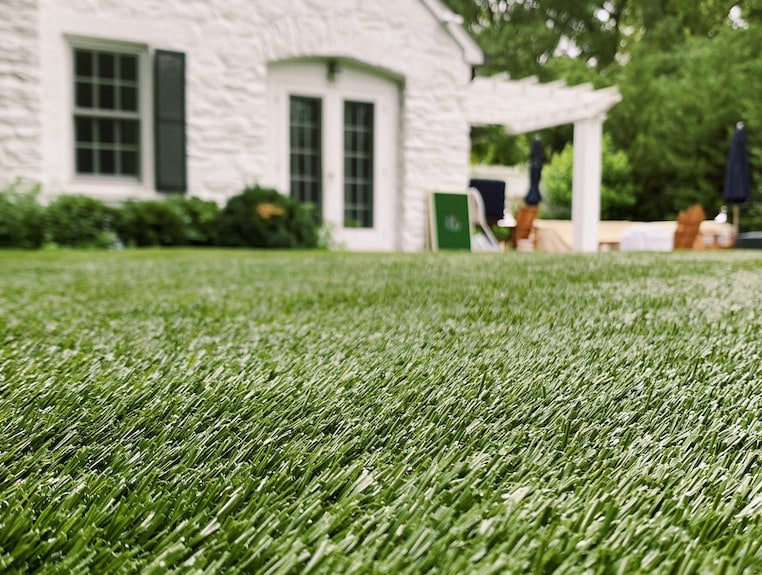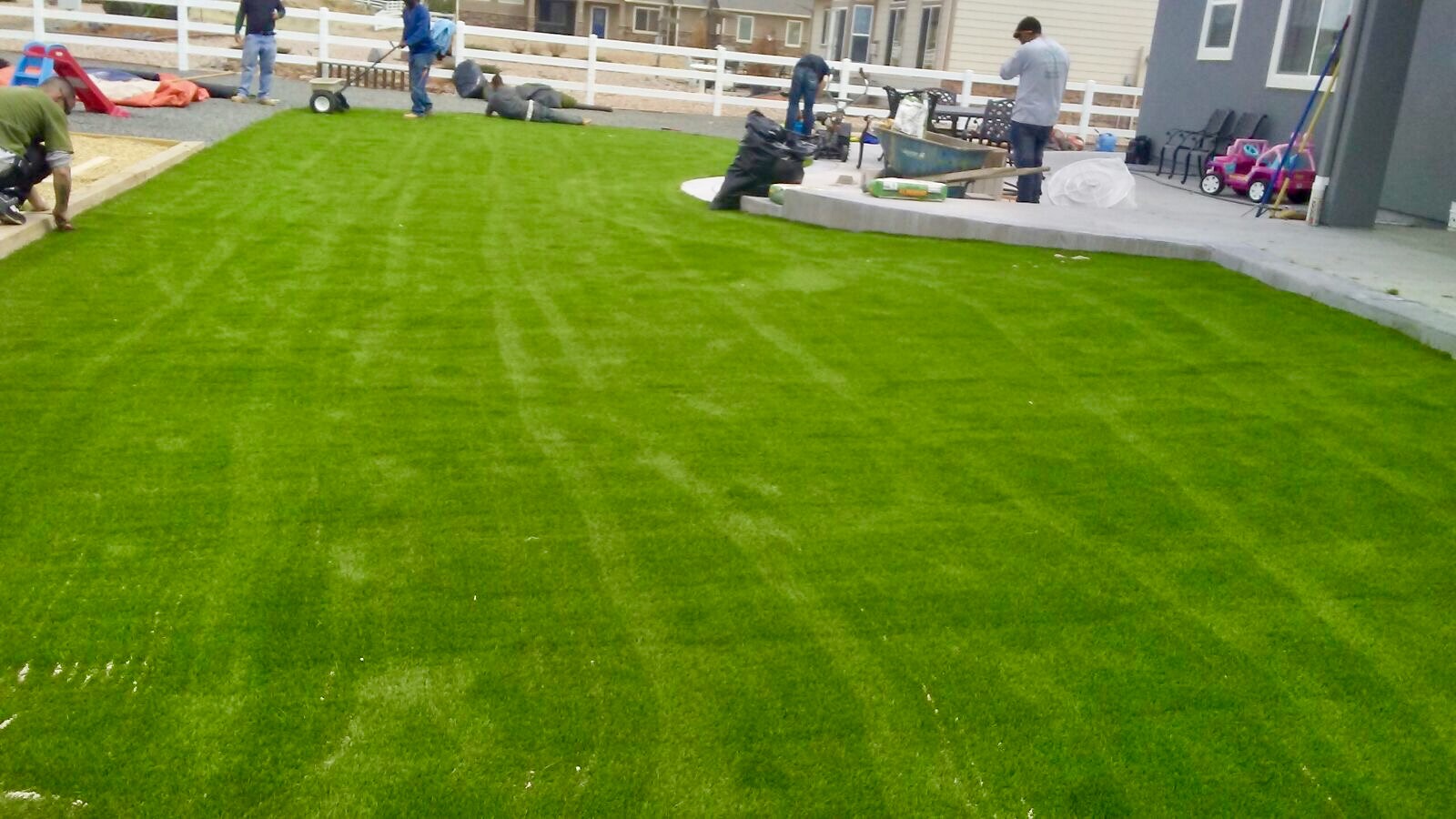Choose the Leading Turf Installation Phoenix AZ Services for Your House or Business
Choose the Leading Turf Installation Phoenix AZ Services for Your House or Business
Blog Article
Delve Into the Environmental Perks of Opting for Synthetic Grass Solutions
The adoption of fabricated grass solutions offers an engaging opportunity to attend to pressing environmental challenges. By considerably decreasing water use and minimizing the application of hazardous chemicals, these options not only advertise sustainable landscape design yet likewise safeguard neighborhood environments.
Water Preservation Benefits
One of the most substantial benefits of synthetic grass is its capacity to conserve water. Standard lawn yards call for significant watering, particularly in areas prone to dry spell or water restrictions. On the other hand, synthetic grass does not need watering, dramatically minimizing the general demand for water sources. This function is specifically advantageous in arid regions where water deficiency is a pushing problem.
By getting rid of the requirement for normal watering, synthetic grass adds to lasting landscape practices and assists alleviate the ecological effect of extreme water intake. Furthermore, the conservation of water includes the reduction of overflow, which can cause soil disintegration and river air pollution.
Additionally, the installation of artificial turf permits homeowners and towns to designate water sources a lot more effectively, focusing on important uses such as drinking water and agriculture. The change towards fabricated lawn not only promotes accountable water usage however also lines up with broader ecological goals focused on maintaining all-natural resources.
As areas progressively focus on sustainability, the water conservation benefits of synthetic grass present a compelling instance for its fostering in business and domestic landscape design projects.
Decreased Chemical Use
The transition to artificial lawn considerably reduces the reliance on chemical treatments commonly utilized in all-natural lawn maintenance. Typical lawn administration normally involves the application of plant foods, chemicals, and herbicides to promote development and control insects. These chemicals can position threats to human wellness, regional wild animals, and the atmosphere, adding to dirt and water contamination.
In contrast, man-made lawn removes the need for these harmful substances. By minimizing the launch of synthetic substances into the ecosystem, artificial lawn promotes much healthier dirt and water systems.
In addition, the absence of chemical overflow related to synthetic grass installations helps shield local rivers from air pollution, supporting water life and keeping biodiversity. Arizona artificial turf. As communities significantly focus on lasting methods, choosing artificial lawn offers a viable service that aligns with ecological conservation objectives. Through this change, building proprietors can take pleasure in lavish environment-friendly rooms without compromising eco-friendly health and wellness, leading the way for an extra sustainable future
Lower Carbon Footprint

In addition, the setup of synthetic grass can lead to considerable water preservation. All-natural grass require significant amounts of water for watering, which not just contributes to the carbon footprint connected with water removal and therapy yet also stress regional water sources. In comparison, man-made turf needs minimal maintenance, needing no watering, consequently considerably minimizing water usage and its associated power prices.
Additionally, the longevity of artificial lawn adds to its lower carbon effect. With a lifespan of as much as 15 years or more, redirected here the demand for constant replacements is decreased, leading to less waste and lower energy consumption in manufacturing and throwing away typical yard choices. Overall, synthetic grass offers a lasting alternative for eco aware landscape design.
Habitat Preservation
Habitat preservation is a vital consideration in the debate over landscape design options, specifically when contrasting synthetic grass to all-natural yard. Natural yard yards frequently require extensive maintenance, consisting of using chemicals, plant foods, and herbicides, which can negatively impact neighborhood ecological communities. These chemicals can seep into the dirt and waterways, harming native flora and animals and interrupting local environments.
In contrast, synthetic grass provides a possibility to minimize the eco-friendly impact of landscaping. By selecting synthetic yard, property owners can minimize the disruption of natural environments connected with typical lawn treatment methods. Synthetic grass gets rid of the demand for dangerous chemicals, thereby safeguarding nearby wildlife and preserving the stability of surrounding environments. The setup of fabricated turf can lead to the conversion of former lawn locations right into even more biodiverse landscapes, such as pollinator yards or indigenous plant areas, which can sustain local wildlife.
Ultimately, the change to synthetic grass not only saves water and decreases maintenance efforts but also fosters a more unified partnership in between human tasks and the natural surroundings, advertising environment conservation in the procedure.
Long-Term Sustainability
Long-lasting sustainability is a crucial factor in assessing the advantages of fabricated lawn over standard grass yards. One of the most substantial benefits of synthetic grass is its longevity; it can last approximately 15-20 years with very little maintenance, whereas all-natural lawn needs regular reseeding and substitute. This durability reduces the requirement for continuous sources, such as water, plant foods, and pesticides, which are essential for preserving a healthy yard lawn.
Additionally, synthetic grass adds to a reduction in carbon emissions related to yard treatment tools. Traditional grass commonly call for gas-powered mowers, leaners, and blowers, all of which contribute to air contamination. Turf installation phoenix az. In contrast, synthetic grass gets rid of the demand for such devices, promoting a cleaner atmosphere
Furthermore, the manufacturing of synthetic lawn progressively makes use of recycled materials, boosting its sustainability profile. As makers take on eco-friendly methods, the environmental footprint of fabricated turf proceeds to lessen.

Verdict
The adoption of synthetic grass options presents substantial environmental advantages, consisting of considerable water conservation, lowered reliance on damaging chemicals, and a lower carbon footprint. Synthetic lawn aids in maintaining all-natural habitats by minimizing land disturbance and advertising long-lasting sustainability via the use of long lasting products. Collectively, these variables highlight the capacity of synthetic grass to add positively to ecological health and supply a viable option to conventional landscape design practices my company in a progressively like it resource-conscious globe.
In contrast, fabricated turf does not require watering, substantially reducing the overall demand for water sources. By minimizing the release of artificial substances into the ecosystem, man-made lawn advertises healthier soil and water systems.
Additionally, the installment of artificial turf can result in considerable water preservation. In comparison, man-made lawn requires marginal upkeep, requiring no watering, thus considerably minimizing water use and its linked power prices.

Report this page